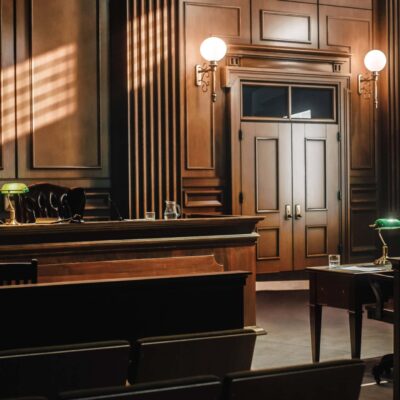Turmoil in the banking industry continues as new allegations of theft have spurred a trade secret dispute that is bringing the defunct Silicon Valley Bank back to the headlines. On May 22, First Citizens Bank filed a $1 billion suit against HSBC Holdings after learning that the financial services company poached more than 40 of SVB’s employees just two weeks after they were acquired by the Bank. 42 former SVB staff members moved to HSBC to participate in “Project Colony”; headed by David Sabow, who the complaint refers to as “the chief architect of this scheme”, the Project sought to acquire what he identified as the “core of SVB’s profitability engine”.
Sabow is a former SVB exec who previously led the defunct bank’s technology and healthcare banking segment, moving to HSBC following First Citizen’s March takeover of SVB’s US entity. He and five other former executives orchestrated the mass migration of SVB employees to HSBC with the hopes of creating their own commercial banking business. The idea aimed at providing financial products to those specifically in tech and life sciences and was accepted by HSBC’s leadership after Sabow claimed that the effort’s profits would exceed $1 billion in just five years.
With proprietary information and a billion dollars at stake, what could this suit suggest about the ongoing messiness resulting from the banking crisis? And how can experts help those in the industry prepare for increased litigation risk?
The Legal Landscape and Current Litigation Risk
As volatility in this sector of the financial market rages on, it is important to consider the implications that this case may have on the broader banking conflict and more specifically, future acquisitions in the space. With almost 200 additional banks in danger of failure, impending mergers will undoubtedly be affected by the conduct observed in this takeover. As First Citizen lamented in the complaint, the actions of HSBC and the individual defendants are disincentivizing stable banks from rescuing failed organizations. If these stable banks see that there is a risk of trade secret theft, they will lose the incentive to support these banks and restore their financial stability.
In considering the above statement, it would be remiss to ignore the potential threat posed to stable banks as more institutions continue to fall victim to the banking crisis. As the dust continues to settle on the first round of collapses, analysts are already worried that other banks may have problems that are yet to be discovered, meaning it is now more important than ever to start preparing for additional fallout related to trade secrets theft, breaches of contract, uncertain economic conditions, bankruptcies, fraud, and more. Further, it is imperative that those in the industry safeguard their operations to ensure that their business isn’t at risk of collapse.
M&A trade secrets theft may serve as a deterrent against future transactions and will likely drive litigation in the space, but leaving a troubled bank to collapse will trigger a myriad of other legal actions that could create further disruption in the industry. As we have seen with the initial SVB crash, suits brought on by investors, shareholders, and consumers are likely to ensue over financial losses and commonly form into larger class action suits that require the failed company to pay the appropriate damages. In addition, the risk of employee litigation is heightened in the instance of a collapse as access to millions of dollars of wages could be lost. Lastly, the threat of regulatory and government litigation also looms above those in the banking industry, especially now that the market is under a microscope. These entities typically investigate the collapses to look for instances of fraud, misconduct, or regulation violations, the precedent for future litigation in the space.
Where Experts Come In
In creating a plan to combat trade secrets litigation in the banking space, those in the industry should look to engage with former banking executives who understand proprietary banking structures and the nuances associated with the creation of commercial banking systems. These experts, along with former regulators, can also provide insight on how to properly protect trade secrets information by establishing strong internal controls, confidentiality agreements, security systems, and more. In addition, interacting with prominent academics and economists will give those experiencing the risk of trade secret theft insights on the value of their trade secrets, potential profit loss, and a full damages analysis.
WIT has created teams of banking professionals who are well acquainted with all areas of bank operations and finance acquisitions, including:
- Former bank chief compliance officers who can speak to the minimum standard of care in the banking industry relating to managing risk and investment strategies (e.g. government bonds, crypto, etc.)
- Prominent academic experts that study the banking industry, the management of capital, liquidity strategies, and counterparty relationships
- Former bank executives that have overseen how institutions invested customer/investor funds
- Insider trading experts to compare insider trades to the public stock trading volume
- Due diligence experts to opine on what investors knew or should have known about the risks
- Bank monitors with experience supervising bank operations under regulatory or criminal settlements
- Former FDIC and SEC regulators with experience overseeing bank charters, ensuring the overall soundness of banking systems, and opining on issues regarding fiduciary responsibilities
Looking for ways to stay a step ahead of the unfolding banking crisis? Reach out to WIT for the best experts to inform your litigation strategy. Our expert teams were specifically built to address the needs of the banking industry and the lawyers that represent it.




